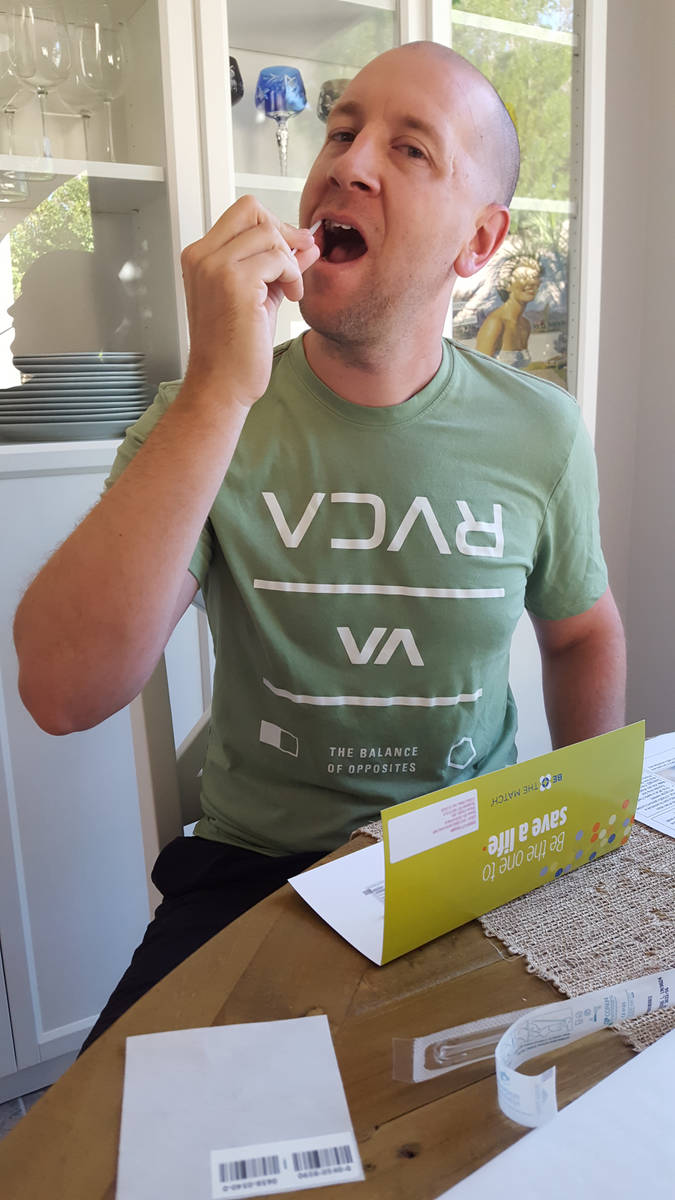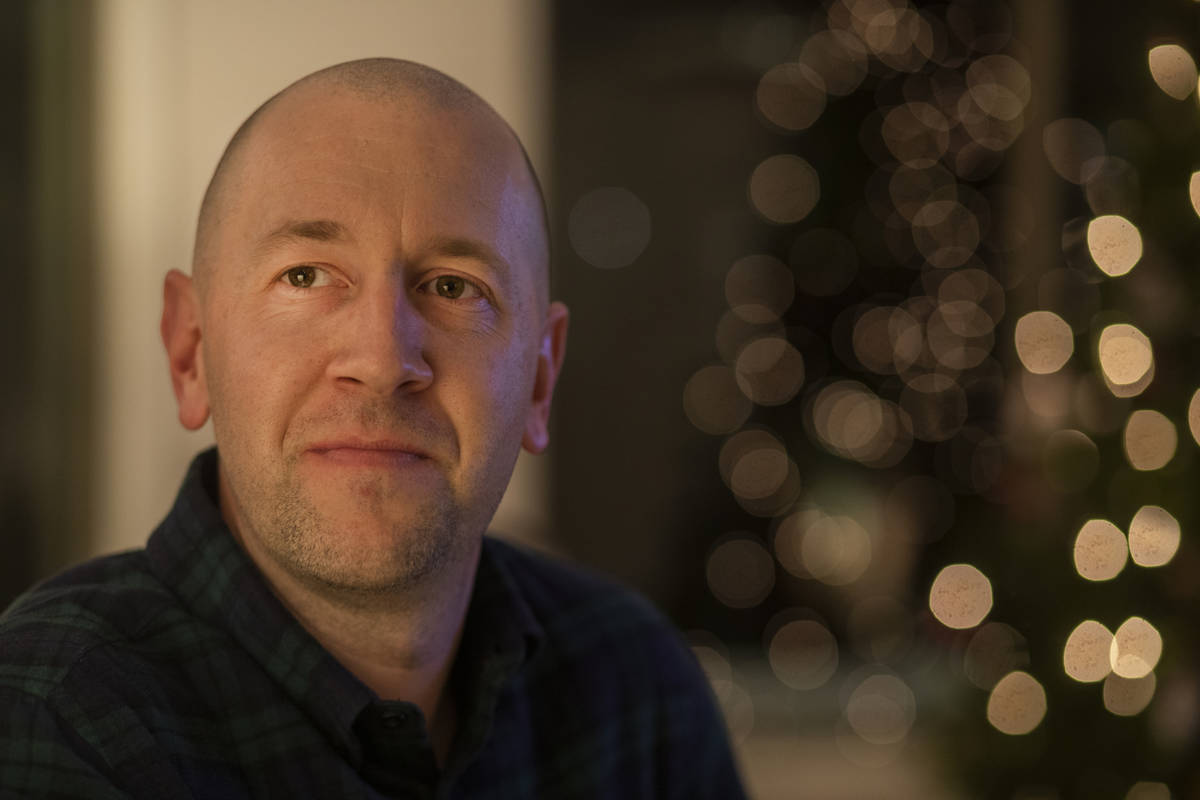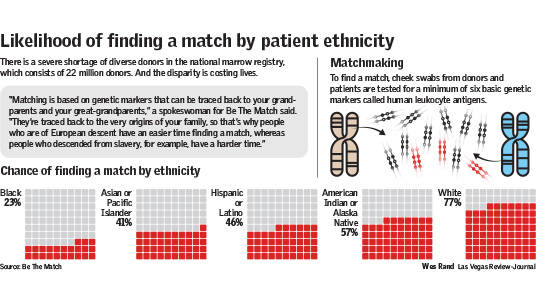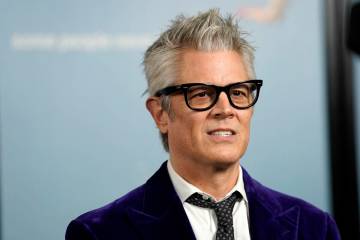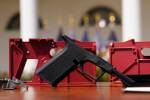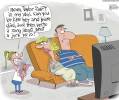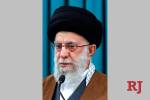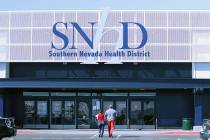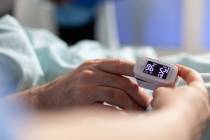He got his cheek swabbed at 24. Nothing happened for 14 years.
Cade Cridland thought a lot about fate as he sat tethered to a machine that drained blood from one arm and pumped it back into his body through the other arm.
After four hours, blood stem cells processed by the machine would be flown thousands of miles to a young child he has never met. A child whose name he does not know.

A child battling blood cancer.
This story unfolded in a Denver hospital in September. But it began 14 years earlier with a split-second decision in Las Vegas when Cridland was 24.
Before the child was born.
“I’m not a religious person by any means,” Cridland, now 38, said. “But I do believe that there’s a lot of fate that takes place in our actions on a day-to-day basis.”
The year is 2006. George W. Bush is president.
And Cridland, a recent UNLV graduate with a bachelor’s degree in journalism and media studies, had just left his part-time job with Vegas PBS for a full-time job with the local chapter of the Leukemia and Lymphoma Society.
Through his new job, Cridland soon found himself at a donation drive, hosted by a charity called Be the Match, for a family desperately searching for a bone marrow donor.
For patients diagnosed with leukemia or lymphoma, a bone marrow or cord blood transplant may be their only hope for a cure.
Cridland was there to work the event, but he drew inspiration from those around him getting swabbed. What’s the harm, he thought.
That day, his DNA was packaged and shipped off to be entered in the National Bone Marrow Registry.
He wasn’t a match. Life went on, and eventually Cridland forgot about the swab.
In the meantime, he moved on to a job with the Clark County School District, got married, adopted a dog, had two children, bought a house, got another dog.
Fourteen years came and went, and now it was 2020.
The phone call
The call came at the best time, during arguably one of the worst years in modern history. The 2020 pandemic was in full swing. Protests over racism and police brutality had taken hold of a divided nation.
Cridland, a spokesman for the school district, needed something good to focus on.
But when that something good came calling earlier this year, he almost didn’t answer. A toll-free number lit up the screen. A telemarketer maybe, or a scam?
Cridland surprised himself and took the call.
“I don’t know if you remember this,” Cridland recalled a woman on the other end explaining. “But you gave a cheek swab at one of our events, and there’s a possibility that this cheek swab is a match for a child in need of stem cells or marrow to help them fight blood cancer.”
The woman, an employee of Be the Match, ended the call with a question: Would you be willing to donate?
She gave Cridland the weekend to think it over. But for Cridland and his wife, who have two young children, “it was a no-brainer.”
Not long after, a second cheek swab confirmed what the woman had told Cridland during their phone call.
He was a match for the patient. In this case, that meant at least eight specific genetic markers in Cridland’s DNA, called human leukocyte antigens, matched the patient’s DNA.
“Every one individual has their own unique genetic DNA code,” said Erica Sevilla, a spokeswoman for Be the Match. “What we’re looking to attach to that code is protein markers that tell your body what cells belong in the body and what cells do not. Essentially, you’re looking to match immune systems between the donor and the patient.”
From there, the patient’s doctor will decide the best course for treatment.
According to Be the Match, many believe that the only way to donate blood stem cells is through a surgical procedure, during which the donor receives anesthesia and a needle is used to extract liquid marrow from the pelvic bone. But 79 percent of donations are done through a nonsurgical procedure known as a peripheral blood stem cell donation.
The doctor in Cridland’s donation case chose the nonsurgical route.
During the week leading up to the donation, Be the Match sent a nurse to Cridland’s home in Henderson once a day for five consecutive days to administer injections of a medication that increased the number of blood-forming cells in Cridland’s bloodstream.
Cridland and his wife were flown to Denver for the procedure.
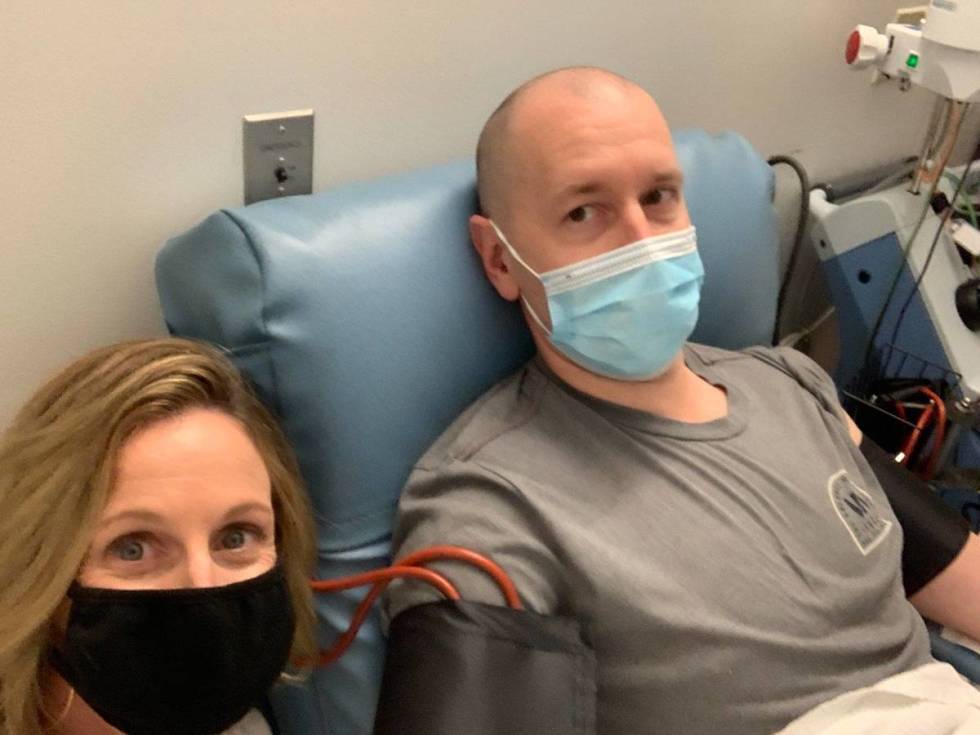
At times throughout the donation process, which spanned about five months from the first phone call to the day of the procedure, Cridland would find himself moved to tears, overcome by his gratitude for the chance to help save a young child.
“To me, the crazy thing about all this is that my actions from 14 years ago have had a dramatic effect on how somebody else is living in 2020,” he said in an interview this month at his home. “With all the negativity we’ve seen this year, this one family may look at 2020 as the best year of their lives because of this one specific moment in my life that took place 14 years ago.”
Even now, three months removed from donation day, Cridland at random will break down in tears.
Sometimes he thinks about his blood pumping through the child’s body. How a piece of him will always be with that child. How someone he has never met, and may never meet, could be such a close genetic match to him.
How we’re all more alike than we think.
Epilogue
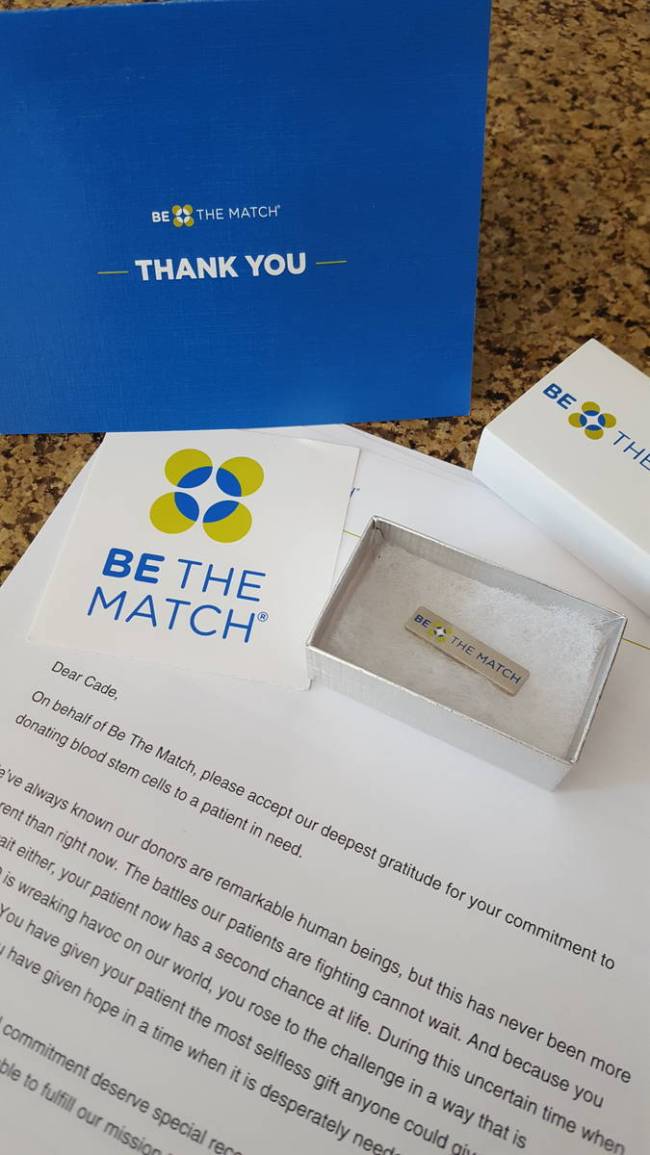
“I wish I could take this feeling, put it in a can and throw a lid on top,” Cridland said of his experience donating stem cells.
If that were possible, Cridland said, he would pass it around like a party favor — but he can’t.
So instead, he’s hoping his story will inspire others, especially people of color, to join the registry and give the gift of a cure to another patient in need.
Currently, there is a severe shortage of diverse donors in the national registry, which consists of 22 million donors. More than 13 percent of the American population is Black, for example, yet only about 4 percent of registered donors are Black.
And the disparity is costing lives.
“Matching is based on genetic markers that can be traced back to your grandparents and your great-grandparents,” said Sevilla, the spokeswoman for Be the Match. “They’re traced back to the very origins of your family, so that’s why people who are of European descent have an easier time finding a match, whereas people who descended from slavery, for example, have a harder time.”
To join the National Bone Marrow Registry and request a cheek swab kit, visit www.join.bethematch.org.
Meanwhile, as of mid-December, Cridland knew only that the patient had received his stem cells. He wasn’t sure, even, if he’d ever meet the child.
Both parties must consent to meeting, and different countries operate under varied “cooling-off periods.” For some countries, a patient and a donor must wait two years before they can meet or even speak.
As a donor, Cridland was told the patient’s age, specific diagnosis and city and country of residence. But he is not allowed to disclose that information to protect the patient’s privacy.
According to Be The Match, 50 percent of all marrow or stem cell donations are international.
“We are either exporting cells or importing cells,” said Sevilla, the charity spokeswoman.
Cridland gave his consent for the patient’s family to reach out to him in the future. For now, it’s a waiting game.
“If the moment comes that they try to connect, I’ll be there,” he said.
Contact Rio Lacanlale at rlacanlale@reviewjournal.com or 702-383-0381. Follow @riolacanlale on Twitter.




